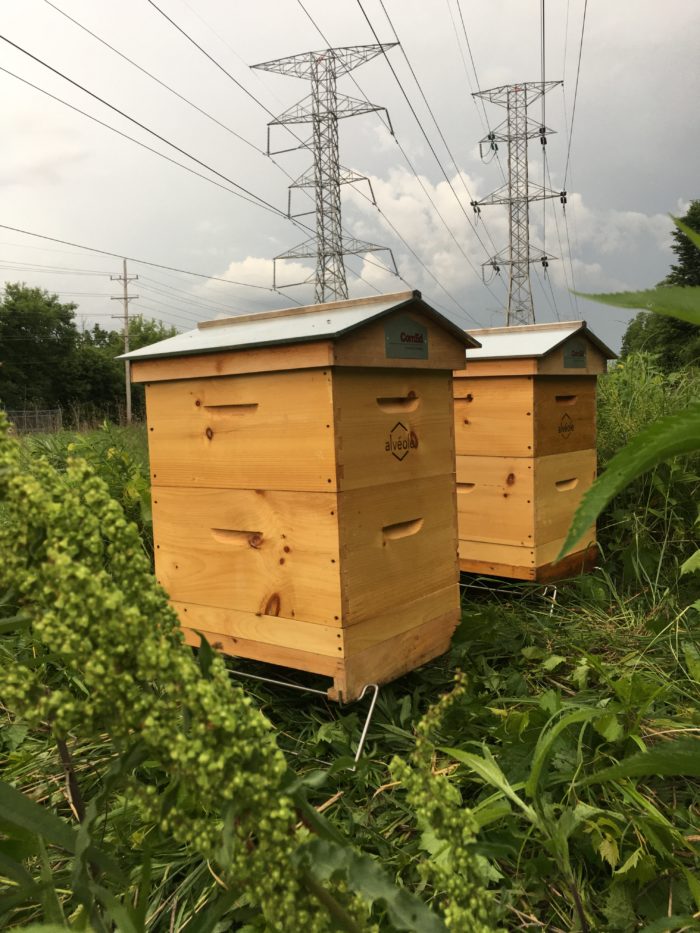
To produce one pound of honey, honey bees have to travel around 90,000 miles, which is equivalent to circling the globe three times. That’s un-BEE-livable!
On National Wildlife Day today, ComEd is embarking on a honey of a program to help protect bees and the environmental benefits they provide by continuing to restore hundreds of acres of native prairie on their rights-of-ways and helping pollinators at the same time.
Watch the video to hear from one of the beekeepers!
ComEd is installing two honeybee hives under its transmission lines in Des Plaines, Ill., as part of the ComEd Conserves: Bees, Butterflies and Beyond program. Alveole, a company that brings bees to businesses to further sustainability efforts, is supporting the effort.
Home to thousands of bees, the hives are situated in acres of wildflowers planted as part of ComEd’s prairie restoration project. Experienced beekeepers maintain the hives, ensuring the health of the colonies and collecting the honey.

Honeybee hives installed under ComEd transmission lines
What’s even sweeter (literally) is ComEd will donate a portion of the 200 jars of harvested honey with a local food pantry to help feed families in need.
“As one of the state’s largest landowners, ComEd is committed to supporting pollinators and their habitats in Illinois,” said Tim Bulthaup, manager of Environmental Management at ComEd. “This program is a reminder of the critical role honeybees and other pollinators play in helping pollinate one-third of the food we consume. It also is an opportunity to provide a safe home for honeybees while working toward a more sustainable future.”
Honeybees are critical to the pollination of crops, but urbanization, climate change and agricultural practices are a growing threat to pollinators. By converting sections of transmission rights-of-way to native grasses in areas throughout northern Illinois, ComEd has restored hundreds of acres of natural prairie habitat in Illinois since 1994. This effort helps to sequester carbon dioxide, prevent runoff and improve water quality, while restoring wildlife habitat and protecting pollinators.
Across the country, when an electric line is down or a transformer needs work, the crews that come out toRead More
The auditorium at ComEd’s Chicago Training Center saw a rising voltage of girl power as more and more young womenRead More
In a groundbreaking collaboration, ComEd and Reactivate came together in December and were joined by Illinois Gov. JB Pritzker toRead More
